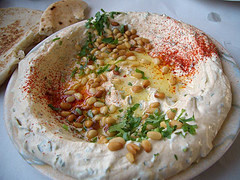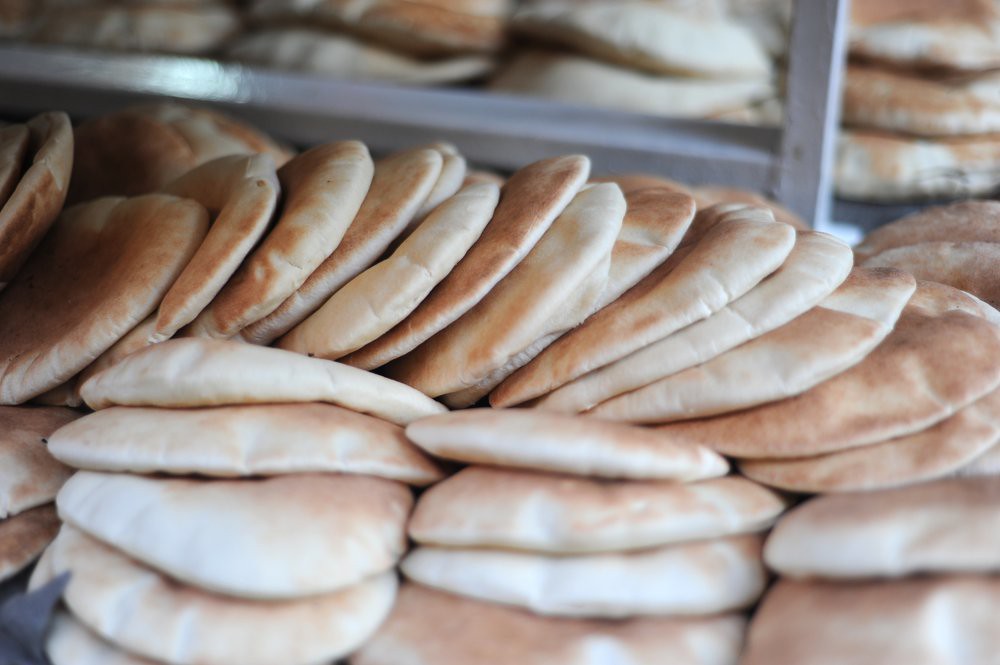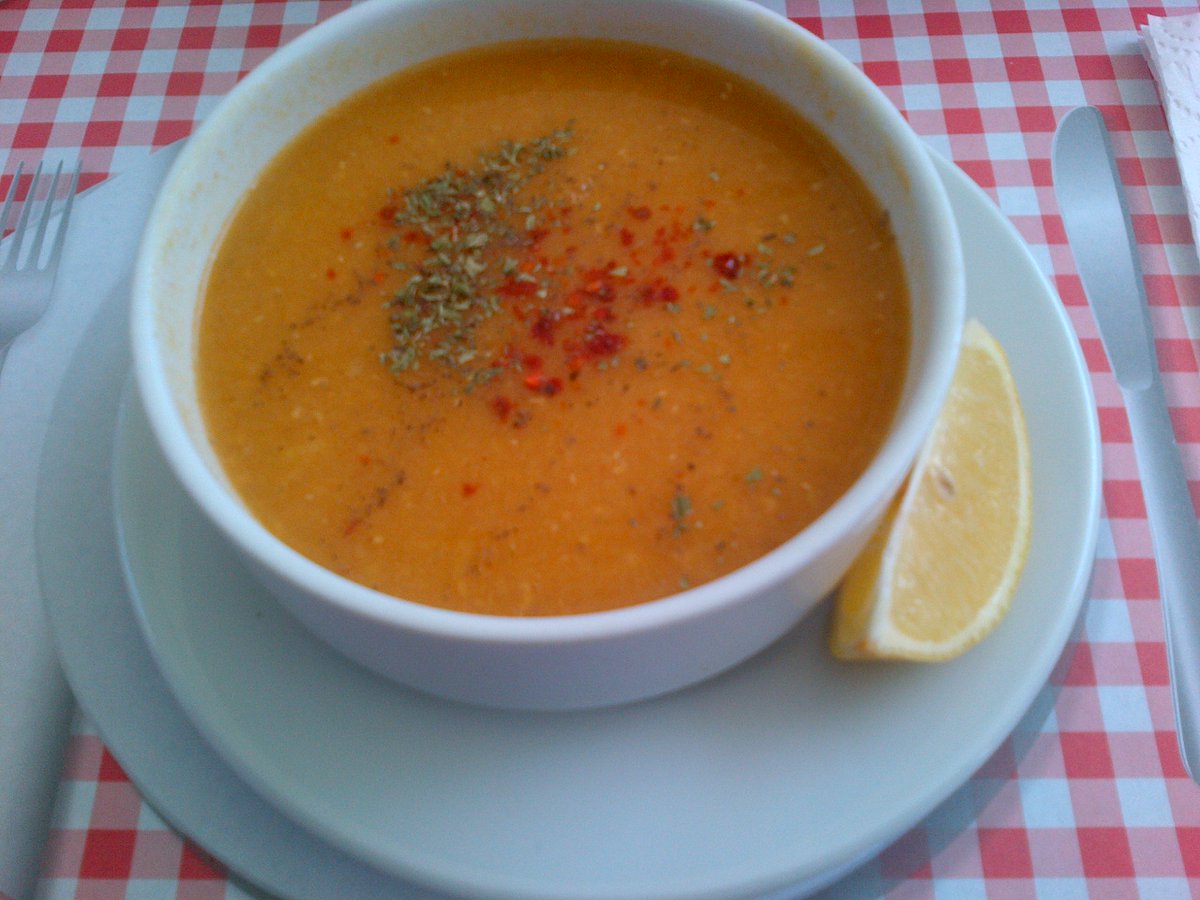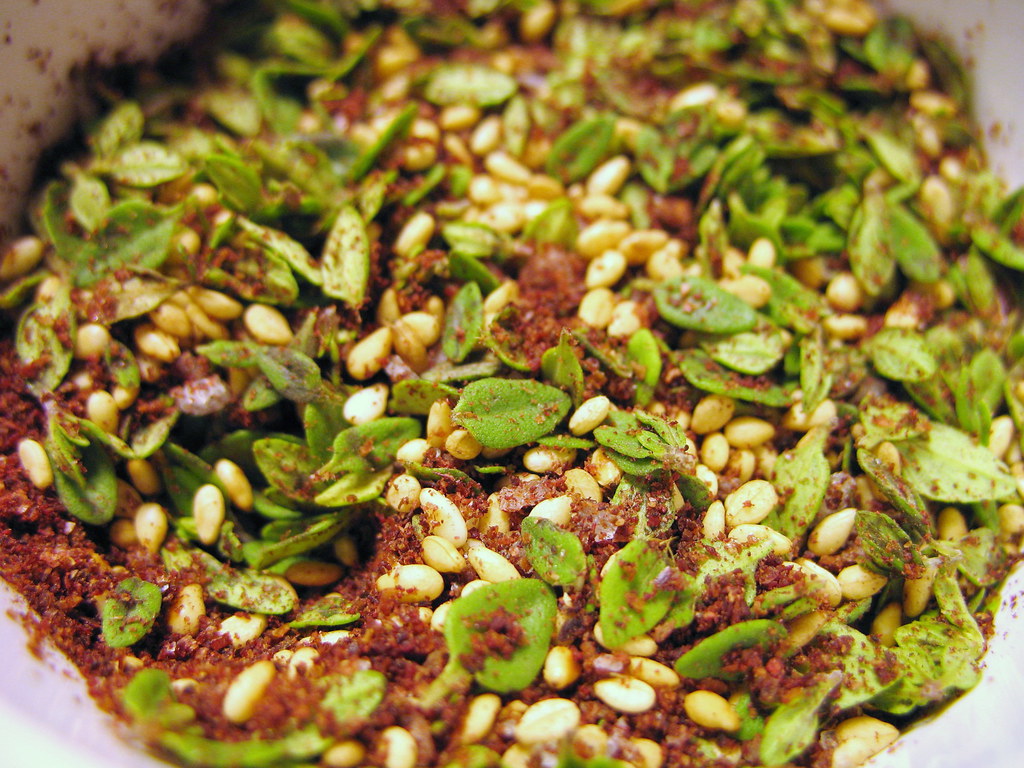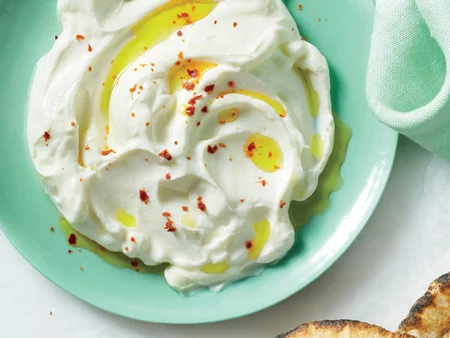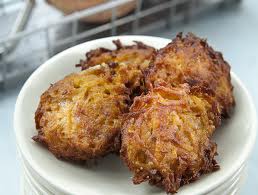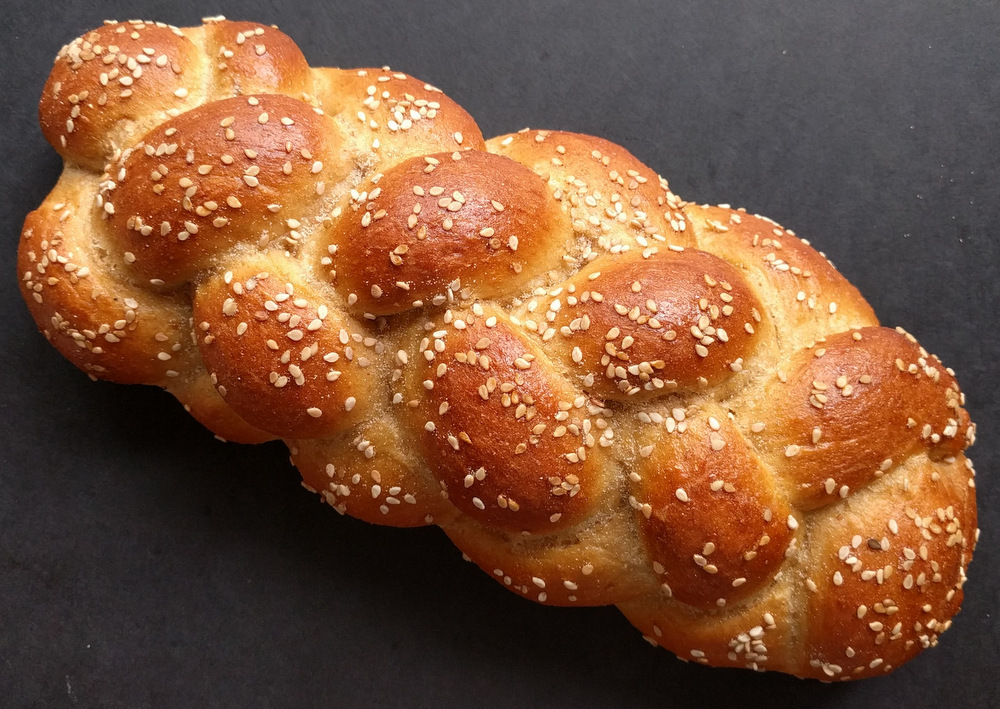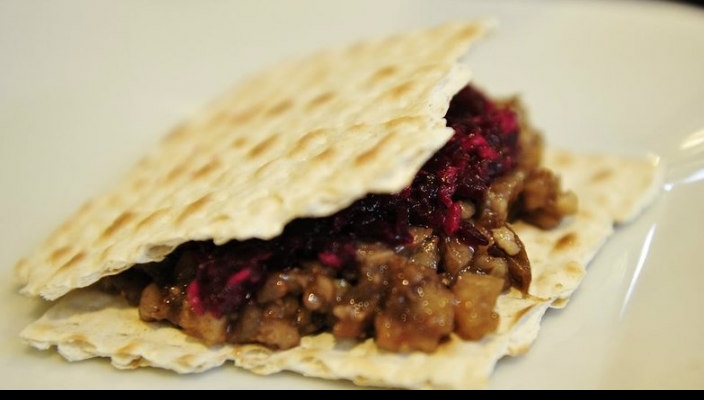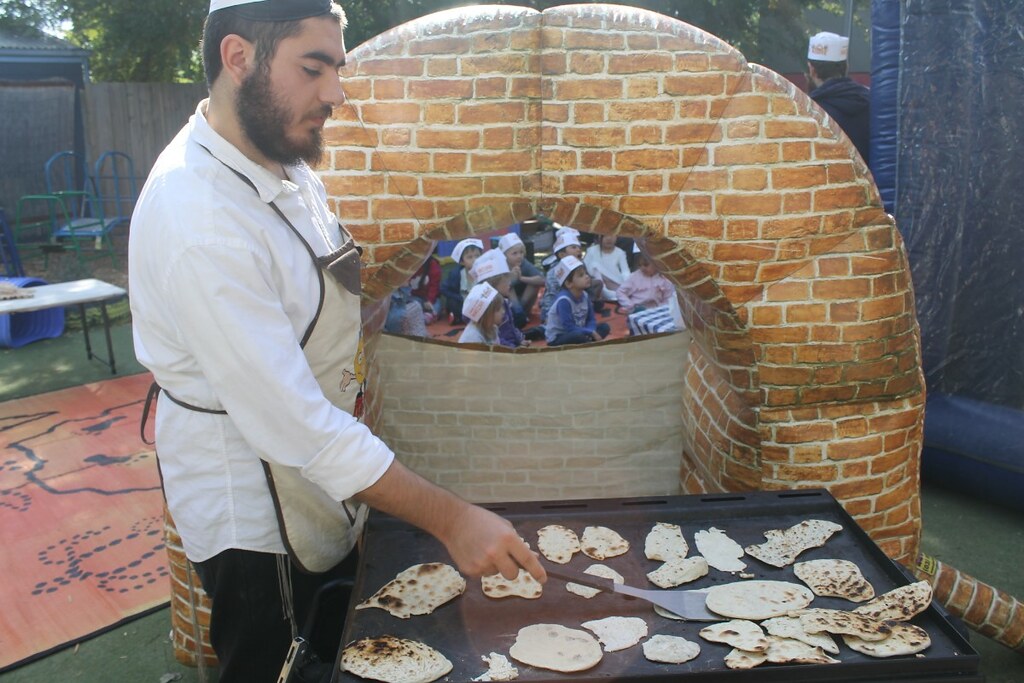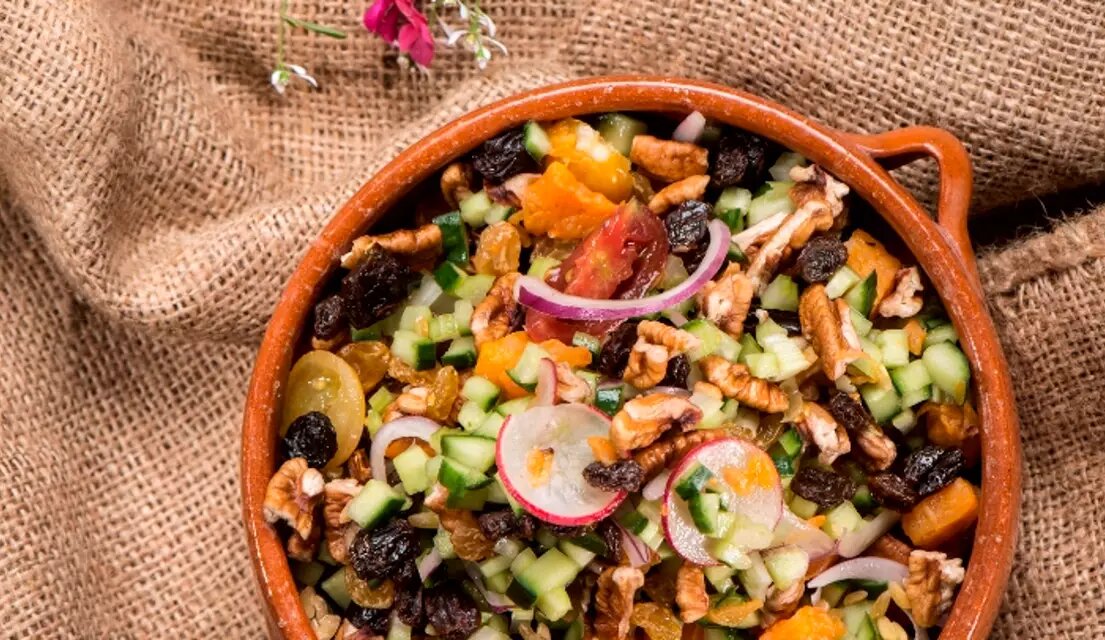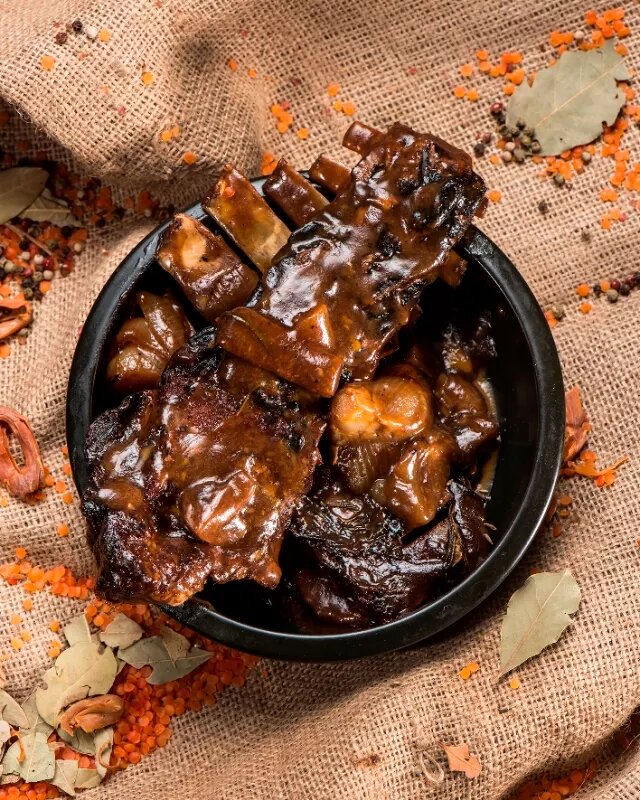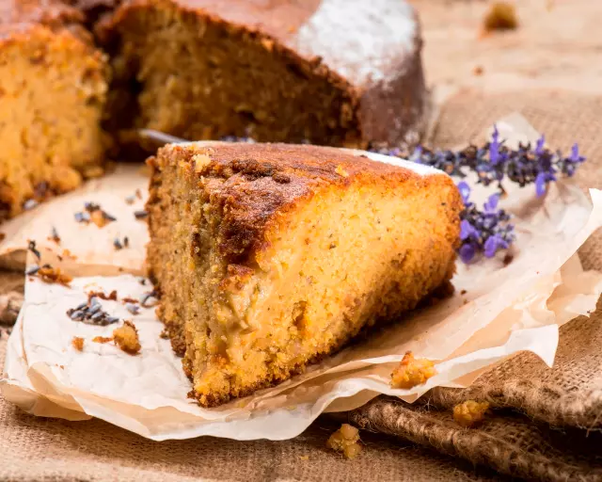Israelis, especially Ashkenazim, are often charged with "appropriating Arab cuisine", but nothing could be further from the truth. Most of what we are accused of stealing is, in fact, ours - dating all the way back to ancient Israel.
Hummus aka Hometz/Himtza
A meze made from mashed chickpeas blended into a paste. It is mentioned several times in the Torah, a Jewish text written in the mid-first millennium BCE. That& #39;s more than 1000 years before the Arab conquests.
A meze made from mashed chickpeas blended into a paste. It is mentioned several times in the Torah, a Jewish text written in the mid-first millennium BCE. That& #39;s more than 1000 years before the Arab conquests.
Pitas aka Pat/Pittek
A flatbread that is often used for wraps and sandwiches. As with hummus, this too bears several mentions in the Torah (as "pat", which in Aramaic means "pita"). Archaeologists have likewise attested to the existence of a pita-like flatbread in ancient Judea.
A flatbread that is often used for wraps and sandwiches. As with hummus, this too bears several mentions in the Torah (as "pat", which in Aramaic means "pita"). Archaeologists have likewise attested to the existence of a pita-like flatbread in ancient Judea.
Lentil soup aka Nezid/Meraq Adashim
A soup made from lentil, beans, peas and, on occasion, meat. This is mentioned explicitly in the Torah, specifically in Genesis 25:29-34.
A soup made from lentil, beans, peas and, on occasion, meat. This is mentioned explicitly in the Torah, specifically in Genesis 25:29-34.
Halva
A type of hard candy made from ground sesame paste, or tahini. Scholars have attested to the existence of sesame in "cake-like form" in Iron Age Israel. You can still find it in Ashkenazi delis.
A type of hard candy made from ground sesame paste, or tahini. Scholars have attested to the existence of sesame in "cake-like form" in Iron Age Israel. You can still find it in Ashkenazi delis.
Za& #39;atar aka Ezob
Ezob is the Hebrew word for "hyssop", a spice that was used in ancient Israel as both a condiment and ritual purification agent. Other popular Middle Eastern spices - including thyme, coriander, and saffron - are likewise attested to by Biblical scholars.
Ezob is the Hebrew word for "hyssop", a spice that was used in ancient Israel as both a condiment and ritual purification agent. Other popular Middle Eastern spices - including thyme, coriander, and saffron - are likewise attested to by Biblical scholars.
Labneh aka Lavan
Lavan is a Hebrew term meaning "white". And true to its name, lavan is a white yogurt that is strained to remove most of its whey. This too is known to have existed since Biblical times.
Lavan is a Hebrew term meaning "white". And true to its name, lavan is a white yogurt that is strained to remove most of its whey. This too is known to have existed since Biblical times.
Ktzitzot Khubeza
It& #39;s not quite falafel, but it& #39;s very similar. One could almost describe it as the Judean version of falafel. Our version is made with khubeza (a type of mallow native to the Levant) and sometimes meat.
It& #39;s not quite falafel, but it& #39;s very similar. One could almost describe it as the Judean version of falafel. Our version is made with khubeza (a type of mallow native to the Levant) and sometimes meat.
Levivot
Sweet cakes made with lentil. Ashkenazim did not have access to lentil in diaspora, and so they used sweet potatoes instead, making & #39;latkes& #39;.
Sweet cakes made with lentil. Ashkenazim did not have access to lentil in diaspora, and so they used sweet potatoes instead, making & #39;latkes& #39;.
Ashishim
Fried pancakes made with mallow, lentils, dates, olive oil, onions, pomegranates, and a garlic that is pressed in vinegar. These are also mentioned in the Torah.
Fried pancakes made with mallow, lentils, dates, olive oil, onions, pomegranates, and a garlic that is pressed in vinegar. These are also mentioned in the Torah.
Qali
Aka Biblical popcorn. This is made from bulgur wheat seeds. There is a Youtube video on this somewhere.
Aka Biblical popcorn. This is made from bulgur wheat seeds. There is a Youtube video on this somewhere.
Khallah
A loaf of braided bread that is made from flour, yeast, salt, and an inordinate amount of eggs. Many East European countries adopted khallah from the Jews who lived among them, and developed their own versions.
A loaf of braided bread that is made from flour, yeast, salt, and an inordinate amount of eggs. Many East European countries adopted khallah from the Jews who lived among them, and developed their own versions.
Hillel Karikh
It is two pieces of matzah with small cut-up, cooked goat/sheep meat, kharoset, fruits, leafy vegetables, and maror in between.
It is two pieces of matzah with small cut-up, cooked goat/sheep meat, kharoset, fruits, leafy vegetables, and maror in between.
Salat Shivat haMunnim
A salad made from the 7 species of Israel: wheat, barley, grapes, figs, pomegranates, olives, and dates. It is mentioned in Jewish texts as 7 species salad.
A salad made from the 7 species of Israel: wheat, barley, grapes, figs, pomegranates, olives, and dates. It is mentioned in Jewish texts as 7 species salad.
Q& #39;deirat
A roast made from goat or sheep marinated in honey and herbal spices, especially saffron and coriander.
A roast made from goat or sheep marinated in honey and herbal spices, especially saffron and coriander.

 Read on Twitter
Read on Twitter
